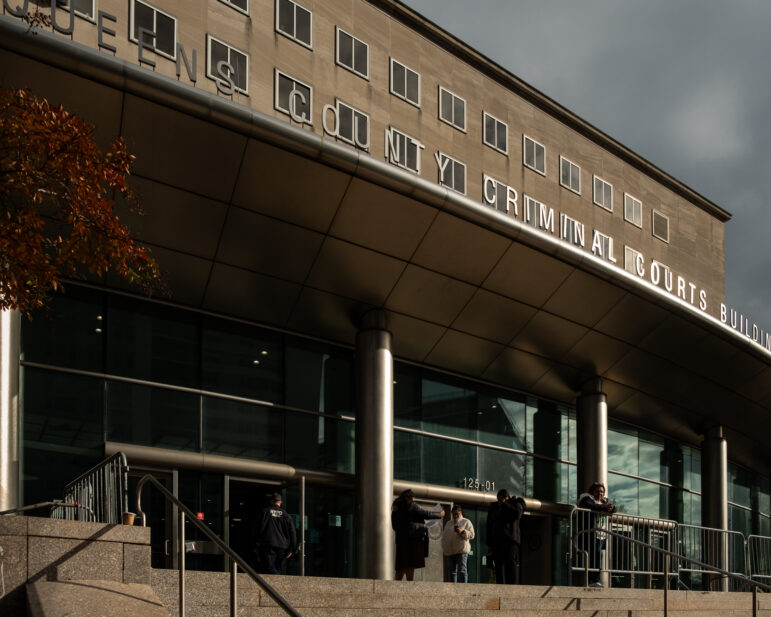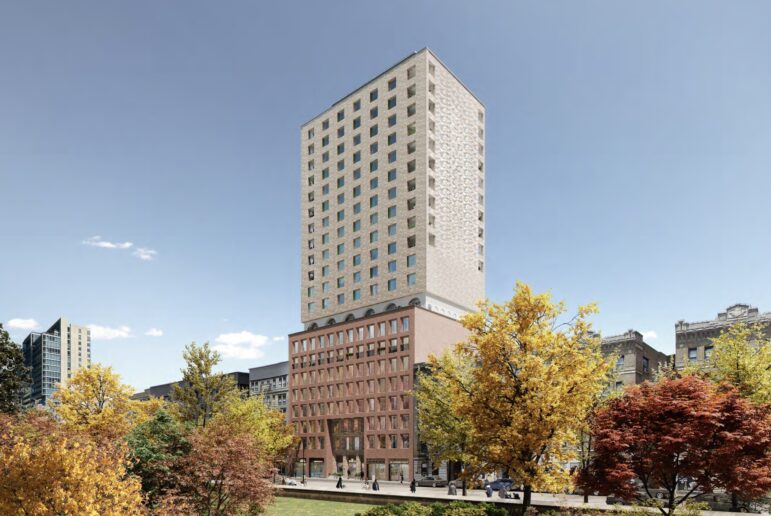
State Sen. Adriano Espaillat has more rent-regulated apartments in his district than there are people in most cities and towns in New York State.
Sometime this spring crowds will assemble in early morning light on a sidewalk in the Bronx or at a church in Brooklyn waiting for the buses. The buses will arrive, absorb their passengers and then chug up the Thruway to Albany. When the doors open, the riders will troop down the steps carrying signs and wearing match t-shirts, ready to rally and lobby to preserve the laws that help keep New York City affordable for them.
Such is the scene every time the state nears a deadline—like the one coming up on June 15—to renew rent regulations on nearly a million apartments. The fight over rent regs is a classic case of people against pursestrings: Landlord have the money to make large campaign donations. Tenant groups have the people to fill up a bus or 20. (Not that this alone makes the tenants morally or factually superior; see the episode of “Bloomberg vs. NRA” for an example of when progressives sided with the big purse.)
People on buses don’t just ride buses; they also vote. That’s always been a strength of the tenant movement. But limiting that strength has always been the fact that most New York State legislators are not from the city and therefore almost certainly have zero rent-regulated tenants in their districts. This is one powerful argument for getting rid of the Urstadt Law, which gives legislators from around the Finger Lakes and the Southern Tier—who may never have met a rent-regulated tenant—more say over city rent laws than the mayor or Council.
But even among city legislators, the importance of rent regulation varies widely from district to district. This is clear in an analysis by the Community Service Society ranking city legislators by the number of rent-stabilized apartments each represents. It came out in October but is timely now as the battle over rent-law renewal begins in earnest. (CSS used to own City Limits and is still one of our funders.)
Take State Senator Adriano Espaillat of northern Manhattan. He has more than 85,000 rent-regulated apartments in his district—16,000 more than the senator ranked second, Gustavo Rivera from the west Bronx. Espaillat has almost twice as many regulated apartments as Independent Democratic Caucus leader Jeffrey Klein, whose 44,000 is still an enormous number. Klein, for his part, has twice as many as Tony Avella. Avella has roughly twice as many as James Sanders, and Sanders has almost triple the number Andrew Lanza has.
On the Assembly side, the 38,000 regulated apartments in the 72nd Assembly District are three times as many as there are in half of the city’s Assembly districts.
The relationship between tenant numbers and legislators’ voting tendencies is not linear. Even if they represent districts with relatively few rent-regulated tenants, most city lawmakers have traditionally supported maintaining or strengthening rent laws.
But as the CSS report notes, the current map of rent-regulated housing essentially forms an “an inner ring around the historically high-rent areas of Manhattan below Harlem” in a pattern that “partly reflects the effect of 20 years of vacancy deregulation.”
That’s a reminder that there’s a second dimension to the politics of rent regulation: If the laws are weakened, not only will the number of stabilized units shrink, but the number of voters with a personal stake in the issue will shrink as well, reducing the ability of tenants to contest the next round of proposed changes to the laws. Fewer buses on the Thruway, in other words, come some future spring morning.







